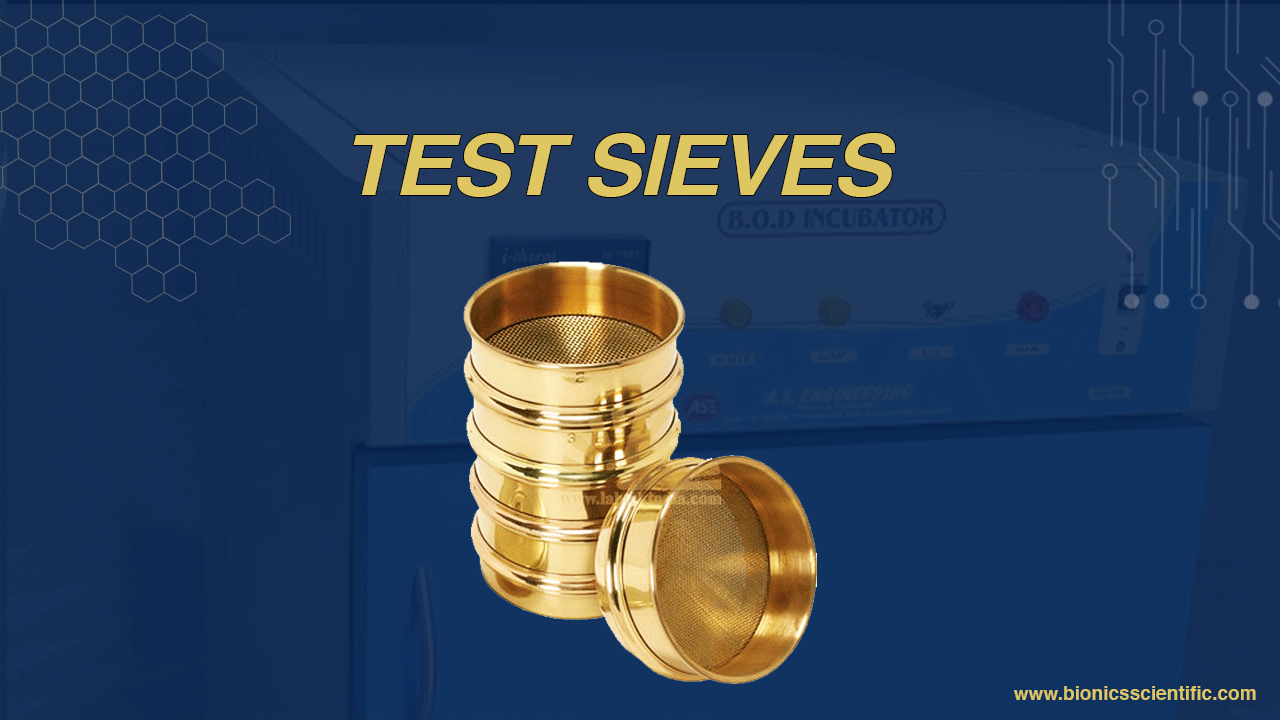Understanding Sieve Mesh Sizes: In industries like pharmaceuticals, food, mining, and construction, accurate material separation ensures product quality. Whether handling powders, grains, or aggregates, sieve mesh sizes determine how particles separate by size.
Before looking at mesh sizes in detail, it's important to understand the role of sieve shakers.
What Is a Sieve Shaker?
A sieve shaker is a machine that automates the sieving process. It replaces manual shaking with controlled vibration, tapping, or air flow. This improves the consistency of particle separation.
How a Sieve Shaker Works
Stacking the Sieves – Arrange sieves in order from largest mesh at the top to smallest at the bottom. Add a collection pan below the stack.
Loading the Sample – Pour the sample onto the top sieve.
Activating the Shaker – Turn on the shaker. It moves the particles so they pass through the mesh openings.
Material Separation – Larger particles remain on upper sieves. Smaller ones pass through to lower sieves.
Collecting and Analyzing – Stop the machine after a set time. Weigh material on each sieve to analyze particle size.
What Is Sieve Mesh Size?
Sieve mesh size refers to the number of openings per inch in a screen. A higher mesh number means smaller openings. This allows finer particles to pass through.
Mesh size helps grade, filter, and classify materials by particle size. It ensures consistency in lab and industrial processes.
As mesh number increases, the opening size decreases. This results in finer separation.
How Mesh Sizes Affect Separation
Mesh size directly affects which particles pass through. Coarse sieves (lower mesh numbers) let large particles through. Fine sieves (higher mesh numbers) allow only small particles.
In food processing, flour is screened using 40–80 mesh sieves. Coarse sieves remove large wheat particles. Fine sieves help remove impurities.
Choosing the right mesh size ensures accurate material classification.
Factors That Affect Sieving Efficiency
1. Particle Shape and Size Distribution
Round particles pass through mesh more easily. Irregular or flat particles can clog or remain on the sieve. Mixed particle sizes may lead to blocking. Vibrating sieves improve separation.
2. Material Moisture and Clumping
Moisture causes clumping. Clumps block the mesh and slow the process. Dry powders move through easily. Wet or sticky materials clog more often. Ultrasonic or vibrating sieves help break up clumps.
3. Sieving Time and Method
Longer sieving improves accuracy. But it slows down processing. Agitation methods like vibration, tapping, or air jets help move particles. Fine powders may need ultrasonic sieving. Coarse materials may need heavier shaking.
4. Preventing Material Loss
Proper mesh size reduces waste. Fine mesh may trap useful material. Coarse mesh may allow unwanted particles to pass. Choosing the right mesh reduces contamination and improves quality.
Applications of Sieve Shaker Machines
Sieve shakers are used widely in different industries. Here are common applications:
Pharmaceuticals: Ensures uniform powder size (e.g., 200 mesh for fine drugs).
Food Processing: Refines flour, sugar, spices (e.g., 40 mesh for flour).
Construction: Grades sand and gravel (e.g., 10 mesh for concrete aggregates).
Mining: Separates minerals from waste (e.g., 100 mesh for fine gold).
Chemicals: Screens pigments and powders (e.g., 150 mesh for powders).
Soil Testing: Classifies soil for farming and building (e.g., 20 mesh for soil).
Recycling: Sorts plastic granules (e.g., 50 mesh for pellets).
Summary
Sieve mesh size controls how particles separate. Higher mesh numbers allow finer material through. Lower numbers allow coarser particles.
Efficiency depends on particle shape, moisture, and sieving time. Using the right mesh size improves quality and reduces waste.
Industries rely on mesh sizes to control particle size and improve consistency in production.


Comments